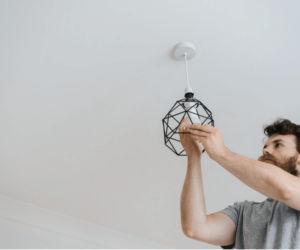If you have an old table lying around or a new one that you want to add a personal touch to, then you should consider using a deep layer of epoxy resin and immortalizing a great design on the table. With a bit of creativity and effort, you can create a unique and fun design for your table. We will share some ideas to get the ball rolling on your creativity then dive into our 7 top tips for the best results. Remember to clean your table before beginning, think about your design, let your glue dry all the way, measure the amount of epoxy you will need, pour it evenly, remove air bubbles, and follow recommended drying times.

Resin-Coated Table Ideas
There are a lot of ways that you can redesign a simple table by adding a deep-poured resin design. Perhaps you want to add driftwood to give the table a beachy look or else place colorful gemstones in the resin to inspire you and bring you joy. You could also paint the table so that when you add resin it looks like water or suspend other fun household items in the epoxy, like money, corks, or even pressed flowers. The options are endless.
You might also want to reimagine the use of an old kitchen table. Maybe you want to add a shell pattern in the resin and turn it into a wash table in the bathroom. Or else, you could paint and resin the table to turn it into a colorful work desk for your office. Upcycling is a great way to revitalize a table and give it a new lease of life. This is much more creative and satisfying than buying a new table to suit the new purpose.
So, how do you create an epoxy-coated table? Below are 7 simple tips for making the perfect deep-poured resin table design. Follow these tips for the best results.
1. Clean and Seal the Surface of the Table
The first step to creating an epoxy-coated table is to clean the surface of the table thoroughly. This will prevent any unwanted dust, dirt, or grime from floating around in the resin and ruining the design. Then, seal any wood or live edges with some resin before the deep pour. This should prevent air bubbles from emerging in the resin. Once your surface area is all clean, sealed, and prepared, you can start to create your design.
2. Create Your Design Carefully
The design you create will be embedded and sealed into the resin, so take your time and make sure you love it before continuing to the next stage. If you want to embed rocks, wood pieces or anything else into the resin, seal it first with some epoxy, just as you did with the wood of the table. Then, when everything is in place and you are happy with your design, you can glue it down.
3. Let Glue Dry Thoroughly
It is very important that you let the glue dry all the way before you begin to pour the resin on top. If the glue is still wet, your design may shift as the resin pours over it. This could destroy your carefully-crafted design and cause air bubbles to form in the resin. Be patient and follow the recommended drying time as specified on the glue packaging. If in doubt, wait a little longer than the recommended time. Test the glue carefully before proceeding.
4. Prepare and Measure the Epoxy Resin
At this point, you are nearly ready to pour your epoxy resin over the table on your carefully crafted and dried design. You should open the windows for ventilation and use gloves to protect your hands. Then, you can use an epoxy calculator for deep pour river tables to figure out the right amount of resin for your table. Remember that if you are embedding rocks or other bulky items in your resin, their mass should be subtracted from the total amount of resin you are calculated to need.
5. Pour the Resin Evenly
Now, you can begin to pour the resin over your design. You should have calculated the total amount of resin you need based on the size of the table and your desired thickness, taking into account the volume of your embedded rocks. Pour slowly and carefully so you can stop when the amount seems sufficient. Make sure to do an even pour so the resin sits perfectly on the table. Take your time and be precise at this stage.
6. Remove Air Bubbles
You should not find that air bubbles have arisen if all of the wood is properly sealed and the resin was poured gently, but if they do arise, you can pop them with a toothpick or blow at them gently through a straw. Bubbles may form over the next thirty minutes, so keep an eye on the resin as it settles.
7. Follow Drying Times
This clever substance is also commonly used for making household trinkets and even resin jewelry. It has a ton of exciting uses and for each one, there will be guidance online and suggested drying times. Make sure you follow the advice of people who have done the craft before you and read carefully what it says on the epoxy resin packet. You do not want to ruin all of this effort at the last stage by interrupting the drying process!

Creating your very own resin table design is a great way to give an old table a new lease of life or else to make a new table totally unique and personal to you. So, if you want to try it yourself, you should follow our top tips for making an epoxy resin table. First, clean the table and seal the wood. Then, create a design and let the glue dry thoroughly. Calculate how much resin you need and pour it evenly, removing any air bubbles. And finally, let it dry according to the recommended time on the packaging before you touch your new table.



